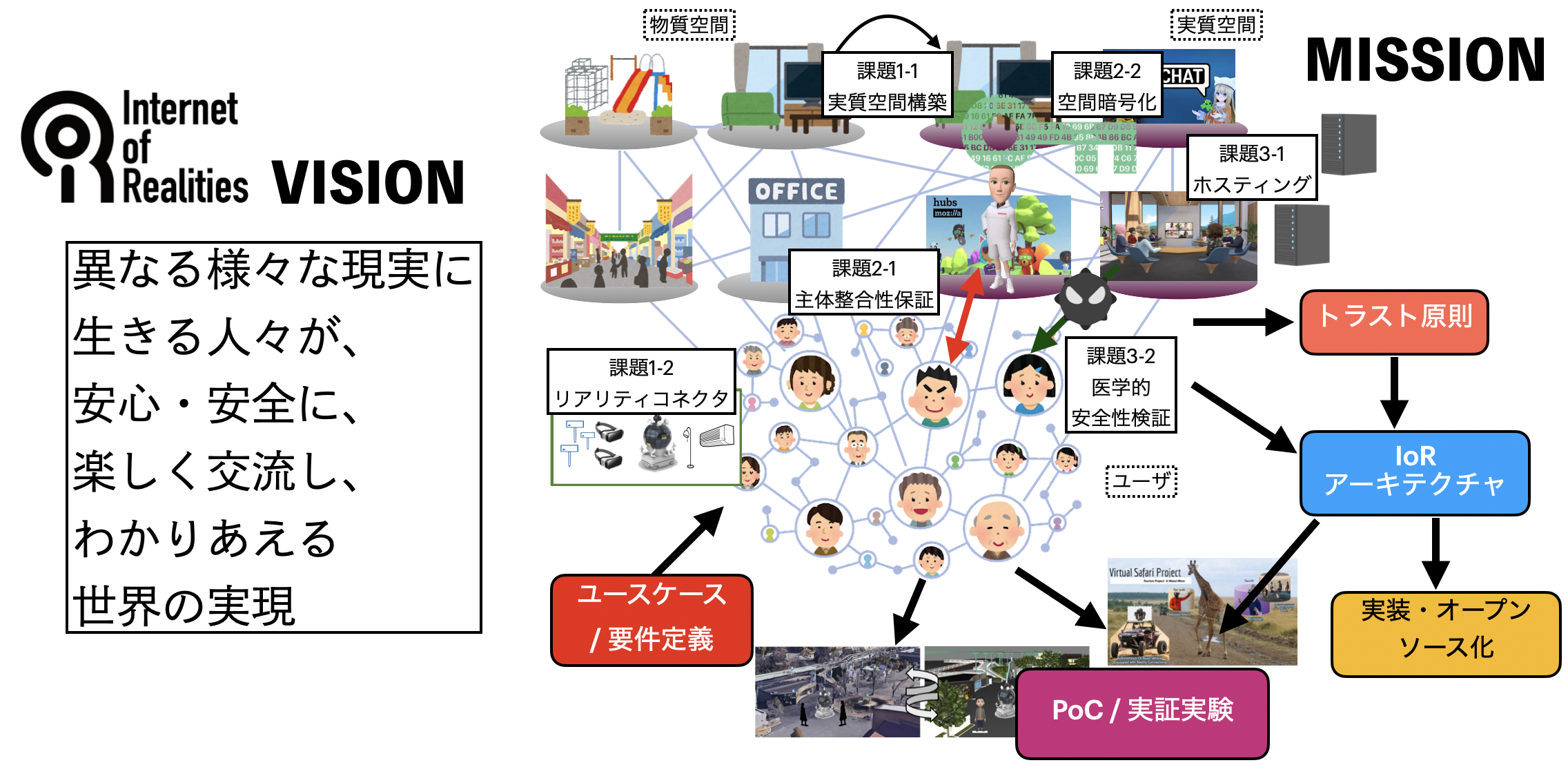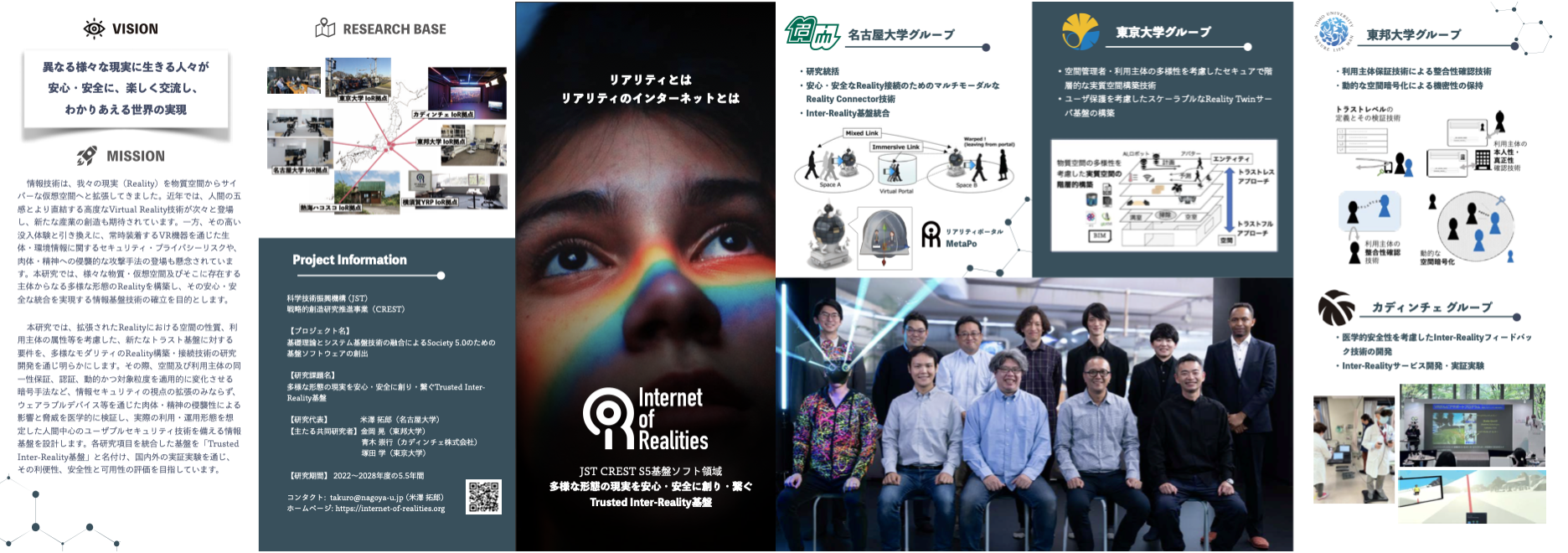 project information
project information
project name: JST CREST「Creation of foundational software for Society 5.0 through the fusion of fundamental theory and system infrastructure technologies」
research project title: 「Trusted Inter-Reality Infrastructure for Creating and Connecting Diverse Realities Securely and Safely」
Principal Investigator: Takuro Yonezawa(Nagoya University)
Lead Collaborating Researcher: Akira Kanaoka(Toho University), Soko Aoki(Kadinche Corporation), Manabu Tsukada(Tokyo University)
research period: 2022 to 2028, a period of 5.5 years
 Internet of Realities Development objectives and the overall vision/targets of the project
Internet of Realities Development objectives and the overall vision/targets of the project

Information technology has expanded our reality(Reality=Where to place the values of life) from physical space to cyber virtual space.In recent years, highly advanced Virtual Reality (VR) technologies directly engaging the five human senses have emerged one after another, raising expectations for the creation of new industries.On the other hand, with the trade-off for this heightened immersive experience, concerns have arisen regarding security and privacy risks related to biometric and environmental data gathered through continuously worn VR devices, as well as the emergence of invasive methods targeting physical and mental well-being. This research aims to establish information infrastructure technology to construct diverse forms of reality comprising various substances, virtual spaces, and entities present within them, enabling their secure and safe integration.
This research first aims to elucidate the requirements for a novel trust infrastructure considering the nature of space in extended reality, attributes of user entities, and other factors. This will be achieved through the research and development of diverse modality reality construction and connection technologies.Throughout this process, we'll not only expand the perspective of information security but also medically verify the impacts and threats posed by the invasiveness on physical and mental aspects through wearable devices (Note 2). We aim to design an information infrastructure equipped with human-centric user security technologies (Note 3), considering the actual usage and operational scenarios. This infrastructure will encompass identity assurance of spaces and user entities, authentication, dynamically adaptive encryption methods, and more. It will be named the 'Trusted Inter-Reality Infrastructure,' integrating each research component. We aim to evaluate its convenience, safety, and usability through domestic and international validation experiments.
Note 1) Trust Principle: CCA (Confidentiality, Consistency, Availability) extends the traditional three security elements CIA (Confidentiality, Integrity, Availability) and establishes it as the principle of trust in Inter-Reality.
Note 2) wearable devices:
A device worn on the human body that stimulates the five senses. This includes devices like VR goggles that enhance visual and auditory immersion, as well as haptic devices that provide tactile feedback.
Note 3) user-centric security technologies:
Security technologies that offer high usability for users, such as being lightweight in terms of user burden and user-friendly, making them easily accessible and familiar to users.
handout
 Examples of Reality Connector developed in this research project. - MetaPo
Examples of Reality Connector developed in this research project. - MetaPo
IoR research experimentation facility

